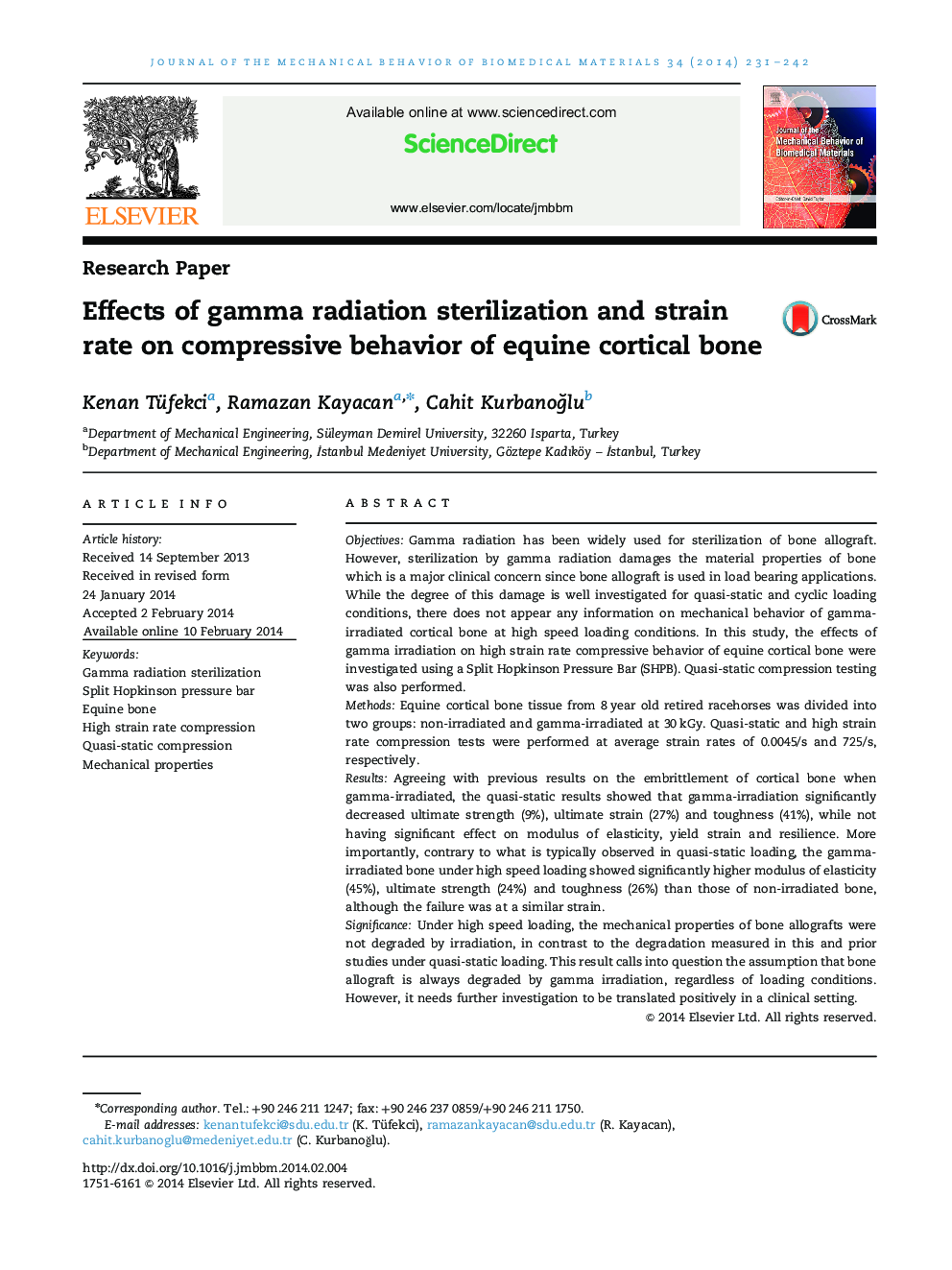| Article ID | Journal | Published Year | Pages | File Type |
|---|---|---|---|---|
| 810769 | Journal of the Mechanical Behavior of Biomedical Materials | 2014 | 12 Pages |
•We use equine cortical bone for quasi-static and high strain rate compression.•We examine effects of gamma radiation and strain rate on bone׳s mechanical behavior.•Strain rate significantly affects bone׳s stiffness, strength and toughness.•Gamma radiation significantly affects bone׳s stiffness, strength and ultimate strain.•No studies have been found about the effects of gamma radiation at high strain rate.
ObjectivesGamma radiation has been widely used for sterilization of bone allograft. However, sterilization by gamma radiation damages the material properties of bone which is a major clinical concern since bone allograft is used in load bearing applications. While the degree of this damage is well investigated for quasi-static and cyclic loading conditions, there does not appear any information on mechanical behavior of gamma-irradiated cortical bone at high speed loading conditions. In this study, the effects of gamma irradiation on high strain rate compressive behavior of equine cortical bone were investigated using a Split Hopkinson Pressure Bar (SHPB). Quasi-static compression testing was also performed.MethodsEquine cortical bone tissue from 8 year old retired racehorses was divided into two groups: non-irradiated and gamma-irradiated at 30 kGy. Quasi-static and high strain rate compression tests were performed at average strain rates of 0.0045/s and 725/s, respectively.ResultsAgreeing with previous results on the embrittlement of cortical bone when gamma-irradiated, the quasi-static results showed that gamma-irradiation significantly decreased ultimate strength (9%), ultimate strain (27%) and toughness (41%), while not having significant effect on modulus of elasticity, yield strain and resilience. More importantly, contrary to what is typically observed in quasi-static loading, the gamma-irradiated bone under high speed loading showed significantly higher modulus of elasticity (45%), ultimate strength (24%) and toughness (26%) than those of non-irradiated bone, although the failure was at a similar strain.SignificanceUnder high speed loading, the mechanical properties of bone allografts were not degraded by irradiation, in contrast to the degradation measured in this and prior studies under quasi-static loading. This result calls into question the assumption that bone allograft is always degraded by gamma irradiation, regardless of loading conditions. However, it needs further investigation to be translated positively in a clinical setting.
Graphical abstractFigure optionsDownload full-size imageDownload high-quality image (263 K)Download as PowerPoint slide
